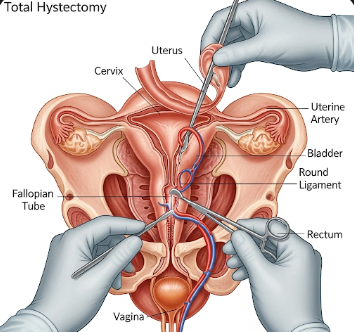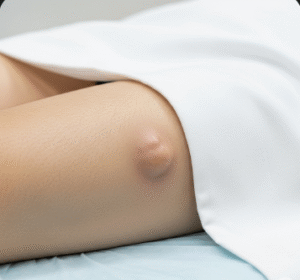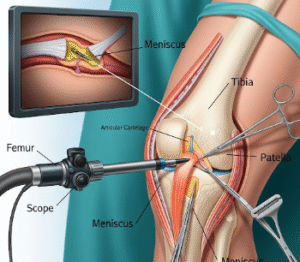Overview
Hysterectomy is a surgical procedure to remove the uterus, sometimes including the cervix, ovaries, and fallopian tubes depending on the indication. It is performed for conditions such as fibroids, endometriosis, chronic pelvic pain, abnormal bleeding, or cancer.
South Korea is known for highly skilled gynecological surgeons, advanced surgical techniques, and minimally invasive options, making it a preferred destination for patients seeking safe, effective, and personalized hysterectomy procedures.
What is Hysterectomy?
A hysterectomy involves:
- Partial or total removal of the uterus
- Optional removal of surrounding reproductive organs (ovaries, fallopian tubes, cervix)
- Performed via different approaches:
- Abdominal hysterectomy → Open surgery through the lower abdomen
- Vaginal hysterectomy → Through the vaginal canal, no external incision
- Laparoscopic / Robotic-assisted hysterectomy → Minimally invasive, smaller incisions, faster recovery
Indications include:
- Uterine fibroids causing pain or bleeding
- Endometriosis or chronic pelvic pain
- Gynecologic cancers (uterine, cervical, or ovarian)
- Prolapse of the uterus
- Persistent abnormal bleeding not responding to conservative treatments
What are the Benefits?
- Relief from pain and abnormal bleeding → Improves quality of life
- Treatment of gynecologic cancers → Prevents disease progression
- Prevention of future uterine problems → Permanent solution
- Minimally invasive options → Smaller scars, less post-operative pain, faster recovery
- Expert care in Korea → High success rates with modern surgical techniques
- Psychological and emotional relief → Reduction in anxiety related to chronic pelvic conditions
Procedure Details
1) How should I prepare for Hysterectomy?
- Preoperative evaluation → Blood tests, imaging, ECG, and gynecologic assessment
- Medication review → Pause blood thinners, discuss chronic medications with your surgeon
- Fasting → 6–8 hours prior to surgery if general anesthesia is planned
- Pre-operative consultation → Discuss surgical approach, anesthesia type, risks, and recovery expectations
- Lifestyle adjustments → Stop smoking, maintain healthy weight, and follow dietary recommendations
2) What happens during the Hysterectomy procedure?
- Anesthesia → General anesthesia is most common
- Surgical steps (vary by approach) →
- Abdominal → Incision in lower abdomen, uterus and surrounding organs removed
- Vaginal → Uterus removed through the vaginal canal, no external incision
- Laparoscopic / Robotic → Small abdominal incisions, uterus removed using camera-guided instruments
- Duration → Typically 1–3 hours depending on approach and complexity
- Monitoring → Continuous monitoring of vital signs and anesthesia
3) What happens after Hysterectomy?
- Immediate recovery → Patient monitored in recovery room until fully awake
- Hospital stay → 1–5 days depending on surgical approach and patient health
- Pain management → Oral or IV analgesics, minimally invasive surgery reduces pain
- Activity restrictions → Avoid heavy lifting and sexual activity for 4–6 weeks
- Follow-up visits → Assess wound healing, monitor for complications, and discuss long-term care
Risks / Benefits
Risks
- ➤ Infection at surgical site or internally
- ➤ Bleeding or hematoma formation
- ➤ Injury to surrounding organs (bladder, bowel, ureters)
- ➤ Blood clots or anesthesia complications
- ➤ Hormonal changes if ovaries are removed
- ➤ Emotional or psychological adjustment
Benefits
- ➤ Permanent relief from pain, bleeding, and gynecologic disorders
- ➤ Treatment or prevention of cancer
- ➤ Reduced risk of uterine-related future complications
- ➤ Faster recovery with minimally invasive approaches
- ➤ High surgical success rate in Korea with expert gynecologists
Recovery and Outlook
- Immediate recovery → Pain, fatigue, and mild abdominal discomfort are common
- Hospital stay → 1–5 days depending on type of hysterectomy
- Return to normal activity → Light activities within 1–2 weeks; full recovery 4–6 weeks
- Long-term outlook → Most patients experience complete relief from symptoms and improvement in quality of life
- Post-operative care → Pain management, wound care, and pelvic floor exercises
- Follow-up care → Regular gynecologic assessments and emotional support if needed
South Korea provides comprehensive post-operative care, including pain management, physiotherapy, counseling, and follow-up monitoring, ensuring safe recovery and optimal outcomes.
When To Call the Doctor
Contact your gynecologist immediately if you notice:
- ⚠️ Severe abdominal pain or swelling
- ⚠️ Heavy vaginal bleeding or foul discharge
- ⚠️ Fever or chills
- ⚠️ Difficulty urinating or bowel obstruction
- ⚠️ Emotional distress affecting daily functioning
Best Korea Option / Process
South Korea is a leading destination for Hysterectomy due to:
- Highly skilled gynecologic surgeons specializing in open, vaginal, and laparoscopic/robotic approaches
- Advanced surgical technology and minimally invasive techniques
- Comprehensive post-operative care including pain management, rehabilitation, and counseling
- Short hospital stays and fast recovery for minimally invasive procedures
- International patient support, including hospital coordination, language assistance, and follow-up
Top Hospitals for Hysterectomy in Korea:
- Asan Medical Center, Seoul – Expertise in minimally invasive gynecologic surgery
- Samsung Medical Center – High success rates for complex and robotic-assisted hysterectomies
- Seoul National University Hospital (SNUH) – Comprehensive pre- and post-operative care
- Yonsei Severance Hospital – Personalized surgical care and rehabilitation programs
👉 For patients with fibroids, chronic pain, abnormal bleeding, or gynecologic cancers, Hysterectomy in Korea provides safe, effective, and advanced surgical care with optimal recovery outcomes.













